Posted By John Doe 2024-05-07 15:42:24 Vistas (2978)
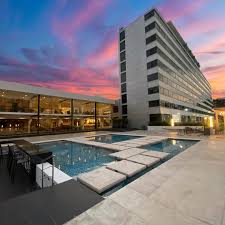
HISTORIA
DEL HOTEL EL TAMA
Para enero de 1956, no se había comenzado las obras del hasta entonces llamado “hotel de turismo de San Cristóbal”. El 27 de ese mes, Gutiérrez, declaró que “el Hotel de Turismo de San Cristóbal, el cual estará ubicado en la Urbanización Pirineos, y cuya terminación fue anunciada por el señor Presidente de la República para este año, contará con 126 habitaciones, tiendas, una piscina olímpica, parque, picadero, etc. El costo de este hotel será de 7 millones de bolívares, y probablemente los trabajos serán confiados a la compañía que lo proyectó, o sea la Tecsa”. Otras obras de la misma naturaleza serían edificadas en Cumaná y en Santo Domingo, Mérida.
Hecha la necesaria licitación, para finales de
abril se abrieron los sobres de las empresas que habían postulado su
participación, entre ellas dos tachirenses y otras de nivel nacional que habían
realizado las edificaciones de Coro, Puerto Cabello, Maracaibo y Margarita. En
mayo, la negociación de los terrenos no se había realizado, anunciándose para
el 29 de ese mes, que la Constructora Esfega obtuvo la buena pro en la
licitación abierta a través de la Dirección de Turismo del Ministerio de
Fomento. Otro editorial de “Vanguardia” avizoró lo que sería la concreción de
este sueño, “puesto que será una obra arquitectónica de categoría, que hará
honor a San Cristóbal y constituirá una de sus mejores atracciones”. El
gobierno había pautado realizarla en seis meses. Nada ni nadie se interpondría
en ese propósito, pues “al ritmo que actualmente se construye en Venezuela
–prosigue el citado editorial- y los recursos técnicos y económicos de que se
dispone, no es sorprendente ver en el término de pocos meses grandes obras en
sitios donde antes existía solamente el yermo”.
Cigarrillo en mano, Edgar Espejo informaba el inicio
de las obras del hotel de turismo el lunes 28 de mayo de 1956, anunciándose su
dotación de un centenar de habitaciones, 14 suites “y una regia mansión
presidencial”. Dijo, con Ferrero Tamayo, “que el movimiento de tierra será de
unos veinticinco mil metros cúbicos y que ya la maquinaria entró en actividad”.
La Esfega tendría seis meses para su realización, pues debía entregarse para el
30 de noviembre. Sería a toda velocidad, como el Parque de Exposición, siendo
considerado “como una ciudad dentro de la misma capital tachirense”.
Para finales de julio se estaba construyendo el
sexto piso de la mole de diez, faltando “unos cuantos días para cumplir dos
meses de iniciada la obra, en 55 por ciento”. Ferrero Tamayo declaró al diario
oficialista “La Hora” de San Cristóbal, reflejándose en el reportaje la
intensidad de la fuerza humana empleada. “Con tales fines –dice “La Hora” –
trabajan en forma vertiginosa y consecutiva en la edificación, 250 hombres, que
cumplen ejemplarmente sus tareas repartidos en tres turnos diarios, laborando
18 horas de las 24 del día. Intervienen obreros rasos, albañiles,
electricistas, operadores de la rama metalúrgica, carpinteros, operarios
especializados en el vaciado de pisos de granito, cabilleros, y todo ese
proceso de hombre que formando parte de una sola unidad disciplinada,
responsable y capaz bajo la dirección de expertos maestros de obra, realizan la
construcción del Hotel de Turismo de San Cristóbal en forma vertiginosa”.
Culminaba la información, subrayando que, “la Constructora Esfega, una vez más,
tendrá así la ocasión de demostrar que contando como cuenta en la actualidad,
con los elementos indispensables, está en capacidad de realizar la obra más
arriesgada en materia de ingeniería, a corto plazo, con eficiencia y alta
capacidad técnica, constituyendo por lo mismo, un prestigio para el Táchira y
para la ingeniería venezolana”.
La Esfega comenzó a tener una relevancia distinta
desde la construcción del hotel de turismo. En la primera semana de octubre
podía verse la estructura casi revestida. La prensa indicaba, que “la
Constructora Esfega ha realizado esta obra en tiempo record, y la edificación
se levanta como símbolo de la alta capacidad técnica de quienes dirigen la
obra”. Se consideraba, como “una obra de recia envergadura que hace honor a la
ingeniería nacional, y constituye un legítimo orgullo para la capital del
Estado Táchira”. Se anunciaba su inauguración para el 2 de diciembre, cuando
Pérez Jiménez cumpliría cuatro años de su ascenso al poder.
El ministro de Fomento, Silvio Gutiérrez, llegó a
San Cristóbal el 21 de noviembre de 1956, procedente de Barinas y de paso a
Mérida, “con el objeto de practicar una visita de inspección a las obras del
Hotel de Turismo “El Tamá”. La gran estructura había sido designada con el
nombre del páramo tachirense. El Presidente de la República deseaba conocer
“exactamente el avance de los trabajos”. No sólo en el Táchira el Gobierno
llevaba a cabo la red hotelera. Lo hacía también en Barinas, Cumaná y Mérida,
restaurando el Hotel Jardín de Maracay, construido en tiempos de Gómez,
previéndose estructuras similares en Calabozo, Puerto La Cruz, Santo Domingo y
Porlamar, mientras concluía el Hotel Humboldt en el Avila caraqueño con su vía
de acceso, el teleférico, el que también se planificó para Mérida. Dijo,
Gutiérrez, que “el objeto es el de facilitar las actividades del turismo a
quienes lo practican, bien sean gentes nacionales o extranjeras, brindándoles
comodidad suficiente, servicios excelentes con hoteles bien dotados y servicios
especializados, ofreciéndoles atracciones y todo cuanto en este sentido prevén
las normas internacionales para el turismo”.
Con su dotación de muebles y accesorios, “El Tamá”
costaría unos 10 millones de bolívares. Para el ministro, era considerado “como
el primero de la República”, agregando que “la obra es extraordinaria, está
bien rematada, y la firma constructora Esfega ha dado el máximo de rendimiento
en esta obra que estoy seguro habrá de satisfacer los deseos del ciudadano
Presidente de la República, General Pérez Jiménez, quien personalmente ha
puesto todo su entusiasmo en la realización de esta obra. Puede decirse con
exactitud –finalizó Gutiérrez- que el Táchira ha sido definitivamente
incorporado a la actividad turística de la nación y que abre las perspectivas
para el intercambio con el exterior. Los resultados serán óptimos en el futuro
y la economía de la región recibirá un fuerte impulso”. La segunda etapa de “El
Tamá” preveía un campo para golf de 12 a 19 hoyos y cuadras para caballos.
Con sombrero “pelo ‘e guama” y en mangas de camisa,
Espejo recibió al ministro en su visita de inspección de tres horas, mientras
Ferrero, también de paisano, pero con la cabeza descubierta, se dirigía al alto
funcionario que era acompañado por una comitiva en la que estaba el gobernador
Pérez Vivas y el arquitecto proyectista de la obra, el argentino Julio César
Volante. Impresionaba ver la piscina semi olímpica, pero aún faltaba tarea por
cumplir. Sin embargo, Gutiérrez sostuvo que “El Tamá”, sería inaugurado
“conforme al plan trazado, el 2 de diciembre, pero entrará en servicio
definitivo para la semana santa del próximo año”. También allí estaba otro de
los ingenieros, Reinaldo Alcalde Alvarez.
No fue posible tener listo “El Tamá” para la fecha
anunciada. A mediados de diciembre llegaban los muebles que revestirían sus
amplios espacios, entretanto, la Esfega “se ocupa en la actualidad de sembrar
los numerosos y bellos jardines que adornarán los frentes, alrededores y
algunos interiores del Hotel”. Su amplio estacionamiento estaba calculado para
150 vehículos y podía llegarse en carro hasta la propia entrada cubierta para
no mojarse en caso de lluvia. En el saludo navideño publicado en la prensa de
San Cristóbal, la Constructora Esfega mostraba orgullosa la primera fotografía
del completamente acabado Hotel El Tamá.
Llegadas las Ferias y Fiestas de Enero de 1957, el
flamante edificio era la atracción de la ciudad que se modernizaba en su
infraestructura. El día 13, en aviso de página entera, “los directores y el
personal técnico, administrativo y obrero de C. A. Constructora Esfega, se
complacen en presentar un atento saludo al ciudadano General Marcos Pérez
Jiménez, Presidente de la República, quien visita el Táchira con motivo de la
inauguración de importantes obras, entre otras el Hotel “El Tamá”, cuya
construcción fue encomendada a Esfega por el Gobierno Nacional”. El arquitecto
Volante emitió juicios favorables a la empresa, en particular, a Ferrero Tamayo
y Espejo.
En efecto, el primer mandatario volvía a su tierra
acompañado de su comitiva, integrada, entre otros por los ministros de la
Defensa, de Relaciones Interiores, de Sanidad y Asistencia Social, de Obras
Públicas y de Fomento; además de los tachirenses Raúl Soulés Baldó, Rafael
Pinzón y Aurelio Ferrero Tamayo, secretario de la Presidencia de la República,
consultor jurídico de la Presidencia y presidente de la Cámara de Diputados,
respectivamente; y el director de la Seguridad Nacional, Pedro Estrada. El 12
de enero, Pérez Jiménez inauguró la sede del Círculo Militar en La Concordia,
al día siguiente, en la mañana, la Casa Sindical de la Avenida Libertador, y en
la noche, el Hotel El Tamá, con regios bailes amenizados por las orquestas de
Luis Alfonzo Larráin y la local Tropical Boys. Las damas relumbraron con sus
mejores galas, ataviándose los caballeros sus ajustados fracs, excepto el
Presidente, sus edecanes y el elenco castrense. El General cortó la cinta,
escotándolo Soulés Baldó en su inmediata derecha, mientras que la sobrina del
secretario, Elisita Villasmil Soulés, fue una de las damitas que sujetaba el
símbolo del inicio de la moderna San Cristóbal.
Desde ese momento, El Tamá comenzó a convertirse en
el centro diversivo de San Cristóbal por excelencia. Juan Mauricio Juge fue su
primer gerente, y las páginas de los periódicos abrieron columnas especiales
para entrevistar a sus huéspedes, entre ellas, la llamada “Gente de Arriba”,
redactada por el periodista Gabriel Casanova Esparza en “La Hora”. No fue desde
el principio de uso exclusivo de “sus pensionistas”, pues cualquiera podía
estar de sus espacios a precios muy cómodos, incluyendo sus restaurantes, sus
salones y su magnífica piscina, la que se disfrutaba adquiriendo un ticket por
tres bolívares. Un desayuno sencillo costaba cuatro bolívares, mientras que una
cena diez bolívares. Las habitaciones oscilaban entre 25 y 40 bolívares
diarios. En una de sus paredes, en sitio especial de la planta baja, quedó
labrado, en lujoso metal, el Escudo de Armas de San Cristóbal, creación de
Aurelio Ferrero Tamayo.
Durante los primeros días de funcionamiento, fue
necesario cierto “reacondicionamiento” que obligó su cierre durante unas tres
semanas en febrero, siendo reabierto el día 20 de ese mes. Otro gerente lo
conducía, Nicolás Trunk, retornando Juge a sus funciones en el Hotel de Aguas
Calientes. En adelante, “El Tamá” se convertiría en uno de los muy especiales
sitios que Edgar Espejo frecuentaría durante su vida.
Del libro inédito "El Doctor Espejo".
Estuvo abierto hasta el 2002 cuando cierra y en 2.024 es reinaugurado, completamente remodelado y operador por la Cadena Eurobuilding conservando su nombre original EUROBUILDING EL TAMA y comienza operaciones en Enero 2024 para las Ferias de San Sebastián.
ENGLISH
By January
1956, work had not begun on the so-called "Hotel de turismo de San
Cristóbal". On the 27th of that month, Gutiérrez declared that "El
Hotel de Turismo de San Cristóbal, which will be located in the residential
complex Pirineos, and whose completion was announced
by the President of the Republic for this year, will have 126 rooms, shops, an
Olympic pool, park, riding school, etc. The cost of this hotel will be 7
million bolivars, and probably the works will be entrusted to the company that
designed it or the Tecsa". Other works of the same nature would be built
in Cumaná, Santo Domingo, and Mérida.
Once the necessary tender was made, by the end of April the envelopes of the companies that had applied for participation were opened, among them, two belonging to Tachira and others of national level that had made the buildings of Coro, Puerto Cabello, Maracaibo, and Margarita. In May, the negotiation of the land had not been carried out, announced on 29 of that month, that the Constructora Esfega obtained the good pro in the open tender through the Directorate of Tourism of the Ministry of Development. Another editorial of "Vanguardia" envisioned that would be the realization of this dream, "since it will be an architectural work of category, which will honor San Cristóbal and will constitute one of its best attractions". The government had planned to do it in six months. Nothing and no one would stand in the way of that "At the rate currently being built in Venezuela -continues the editorial above- and the technical and economic resources available, it is unsurprising to see within a few months great works in places where there was only the wasteland".
Cigarette
in hand, Edgar Espejo reported the beginning of the works of the tourist hotel
on Monday, May 28, 1956, announcing its endowment of 100 rooms, 14 suites
"and a royal presidential mansion". He said, with Ferrero Tamayo,
"that the movement of land will be about twenty-five thousand cubic meters
and that the machinery has already become active". The Esfega would have
six months for its realization, because it had to be delivered by November 30.
It would be at full speed, like the Parque
de Exposición, ,
being considered "a city within the capital of Tachira itself".
By the end of July, the sixth floor of the ten-block was being built, with "a few days to complete two months of work begun, at 55 percent". Ferrero Tamayo told the official newspaper "La Hora" of San Cristóbal, reflecting in the report the intensity of the human force used. "For these purposes, says "La Hora" - 250 men work in a dizzying and consecutive manner in the building, carrying out their tasks in three shifts a day, working 18 hours of 24. Workers, masons, electricians, operators of the metallurgical branch, carpenters, workers specializing in the emptying of granite floors, lobbyists, and all that process of a man who is part of a single disciplined unit, intervene, responsible, and capable under the direction of experts masters of work, carry out the construction of the Hotel de turismo de San Cristóbal in the dizzying form". He concluded the information, stressing that "Once again, Construtora Esfega will have the opportunity to demonstrate that it can carry out the riskiest engineering work, in the short term, with efficiency and high technical capacity, constituting for the same thing, a prestige for the Táchira and the Venezuelan engineering".
The Esfega
began to have a different relevance since the hotel's construction. In the
first week of October, the structure could be seen almost clad. The press
indicated that "the Constructora Esfega has made this work in record time,
and the building stands as a symbol of the high technical ability of those who
direct the work". It was considered, as "a work of great magnitude
that does honor to the national engineering, and constitutes a legitimate pride
for the capital of the Táchira State". Its inauguration was announced for
December 2, when Pérez Jiménez would celebrate four years of his rise to power.
The Minister of Public Works, Silvio Gutiérrez, arrived in San Cristóbal on November 21, 1956, coming from Barinas and passing to Mérida, "to conduct an inspection visit to the works of the Tourism Hotel "El Tamá". The great structure had been designated with the name of the Tachira's wasteland. The President of the Republic wanted to know "exactly how the work is progressing". It was not only in Táchira that the Government operated the hotel network. He also did so in Barinas, Cumaná, and Mérida, restoring the Hotel Jardín de Maracay, built in Gómez’s time, providing similar structures in Calabozo, Puerto La Cruz, Santo Domingo, and Porlamar. At the same time, he concluded the Humboldt Hotel in the Avila, Caracas with its access road, the cable car, which was also planned for Mérida. Gutiérrez said that "the aim is to facilitate tourism activities for those who practice it, whether they are nationals or foreigners, providing them with sufficient comfort, excellent services with well-equipped hotels and specialized services, offering attractions and everything in this regard provided for international standards for tourism".
With its
furniture and accessories, "El Tamá" would cost about 10 million
bolivars. The minister was considered "the first of the Republic",
adding that "the work is extraordinary, it is well finished, and the
construction firm Esfega has given the maximum performance in this work that I
am sure will satisfy the wishes of the citizen President of the Republic,
General Pérez Jiménez, who has personally put all his enthusiasm in the
realization of this work. It can be said with accuracy -concluded Gutiérrez-
that Táchira has been incorporated into the tourist activity of the nation and
that it opens the prospects for the exchange with foreigners. The results will
be optimal in the future and the region's economy will receive a strong
boost". The second stage of "El Tamá" provided a golf course
from 12 to 19 holes and horse stables.
Wearing a "hairy" hat and shirt sleeves, Espejo received the minister on his three-hour inspection visit. At the same time, Ferrero, also in civilian clothes, but with his head uncovered, was headed to the high official who was accompanied by a motorcade in which was the governor Pérez Vivas and the architect-planner of the work, the Argentinian Julio César Volante. It was impressive to see the semi-Olympic pool, but there was still a task to be accomplished. However, Gutiérrez said that "El Tamá" would be inaugurated "according to the plan drawn, on December 2, but will enter definitive service for Holy Week next year". Also, there was another engineer, Reinaldo Alcalde Alvarez.
It wasn't
possible to have "El Tamá" ready for the announced date. In
mid-December came the furniture that would cover its wide spaces, meanwhile,
the Esfega "is currently engaged in planting the many beautiful gardens
that will adorn the fronts, surroundings and some interiors of the Hotel".
Its ample parking was calculated for 150 vehicles and could be reached by car
to the covered entrance itself so as not to get wet in case of rain. In the
Christmas greeting published in the San Cristóbal press, Constructora Esfega
proudly showed the first photograph of the finished Hotel El Tamá.
At the Fairs and Festivals of January 1957, the brand new building was the attraction of the city that modernized its infrastructure. On the 13th, in full page notice, "the directors and the technical, administrative and workers staff of C. A. Constructora Esfega, are pleased to present an attentive greeting to the citizen General Marcos Pérez Jiménez, President of the Republic, who visits the Táchira on the occasion of the inauguration of important works, among others the Hotel "El Tamá", whose construction was entrusted to Esfega by the National Government". The architect Volante issued favorable judgments to the company, particularly to Ferrero Tamayo and Espejo.
Indeed, the
first president returned to his land accompanied by his entourage, integrated,
among others, by the Ministers of Defense, Interior Relations, Health and
Social Assistance, Public Works and Development; in addition to Raúl Soulés
Baldó, Rafael Pinzón and Aurelio Ferrero Tamayo, secretary of the Presidency of
the Republic, legal consultant to the Presidency and president of the Chamber
of Deputies, respectively; and the director of National Security, Pedro
Estrada. On January 12, Pérez Jiménez inaugurated the headquarters of the
Military Circle in La Concordia, the next day, in the morning, the Union House
on Libertador Avenue, and at night, the Hotel El Tamá, with regal dances
enlivened by the orchestras of Luis Alfonzo Larráin and the local Tropical
Boys. The ladies shone with their best finery, the knights dressing their tight
tails, except the President, his aides, and the military cast. The General cut
the ribbon, cutting Soulés Baldó on his right, while the niece of the
secretary, Elisita Villasmil Soulés, was one of the young ladies holding the
symbol of the beginning of modern San Cristóbal.
From that
moment, El Tamá began to be the center of San Cristóbal’s diversity for
excellence. Juan Mauricio Juge was its first manager, and the pages of the
newspapers opened special columns to interview their guests, among them, the
so-called "Gente de Arriba", written by journalist Gabriel Casanova
Esparza in "La Hora". It was not from the beginning of exclusive use
of "its pensioners", because anyone could be of its spaces at very
comfortable prices, including its restaurants, its lounges, and its magnificent
pool, which was enjoyed by acquiring a ticket for 3 bolivars. A simple
breakfast costs 4 bolivars, while a dinner 10 bolivars. Rooms ranged from 25 to
40 bolivars daily. On one of its walls, in a special place on the ground floor,
the coat of arms of San Cristóbal, created by Aurelio Ferrero Tamayo, was
carved in luxurious metal.
During the first days of operation, it was necessary a certain "reconditioning" that forced its closure for about three weeks in February, being reopened on the 20th of that month. Another manager was driving him, Nicolás Trunk, returning Juge to his duties at the Hotel de Aguas Calientes. Henceforth, "The Tamá" would become one of the very special places that Edgar Espejo would frequent during his life.
From the
unpublished book " El Doctor Espejo ".
It was open
until 2002 when it closed and in 2024 it reopened, completely remodeled, and
operated by the Eurobuilding Chain retaining its original name EUROBUILDING EL
TAMA, and begins operations in January 2024 for the Ferias de San Sebastián.
Tags: No Tags
Vía Villa Marina El Pico, Villa Marina, Falcon, 4101, Venezuela
41.00 $
Av. Humboldt Urbanización La Hacienda con calle 5, Código Postal 5101 Mérida Edo Mérida ??? Venezuela
35.00 $
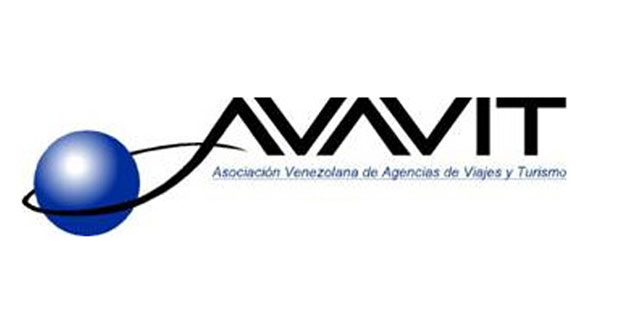
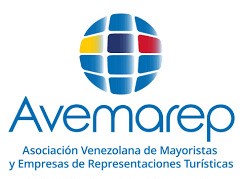

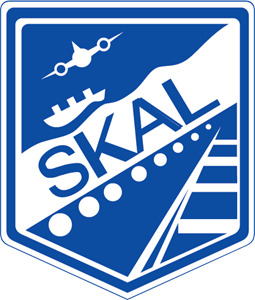

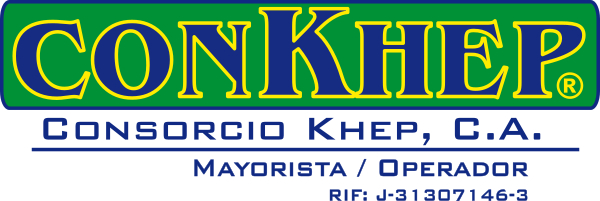
Noticias mas vistas
Merida, Cucuta, Canaima y otros destinos
2025-10-16 16:06:22
Feliz Dia del Guia de Turismo
2025-02-21 10:32:41
Jubileo año 2025 o año Santo Catolico
2024-11-27 09:21:59